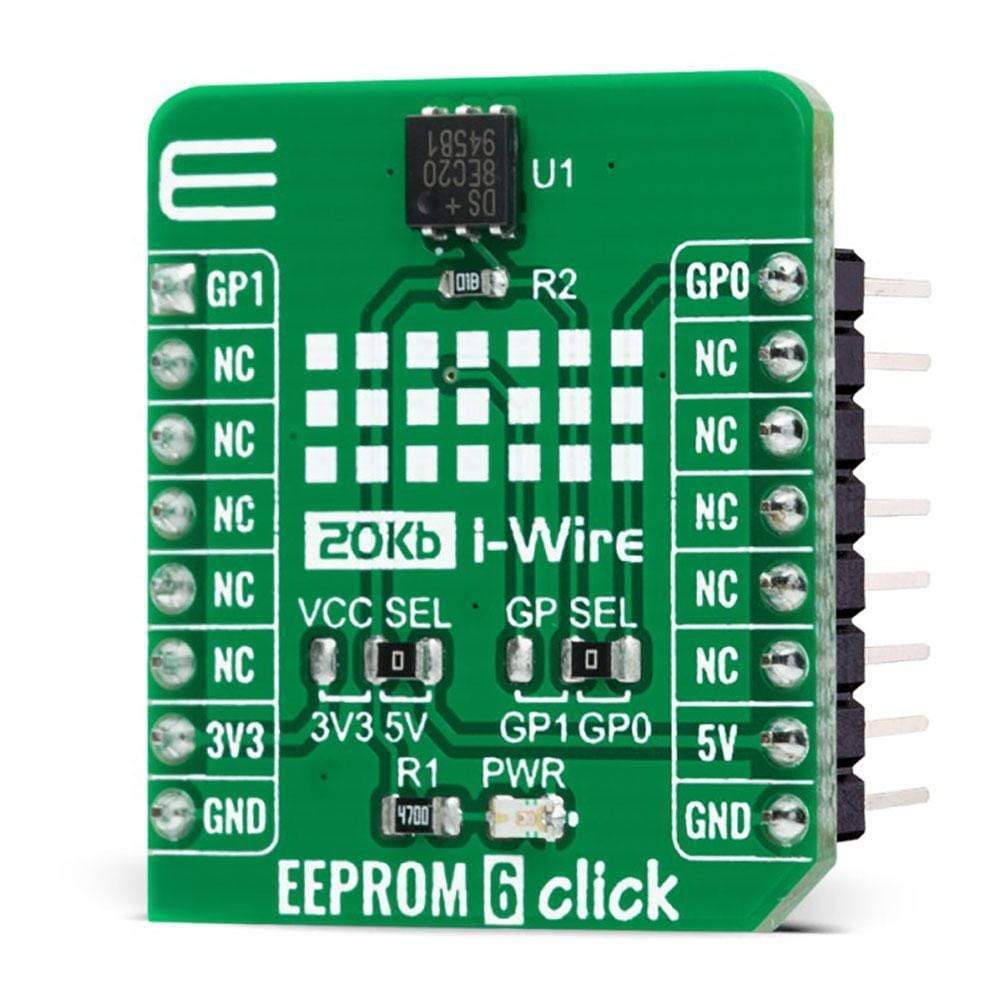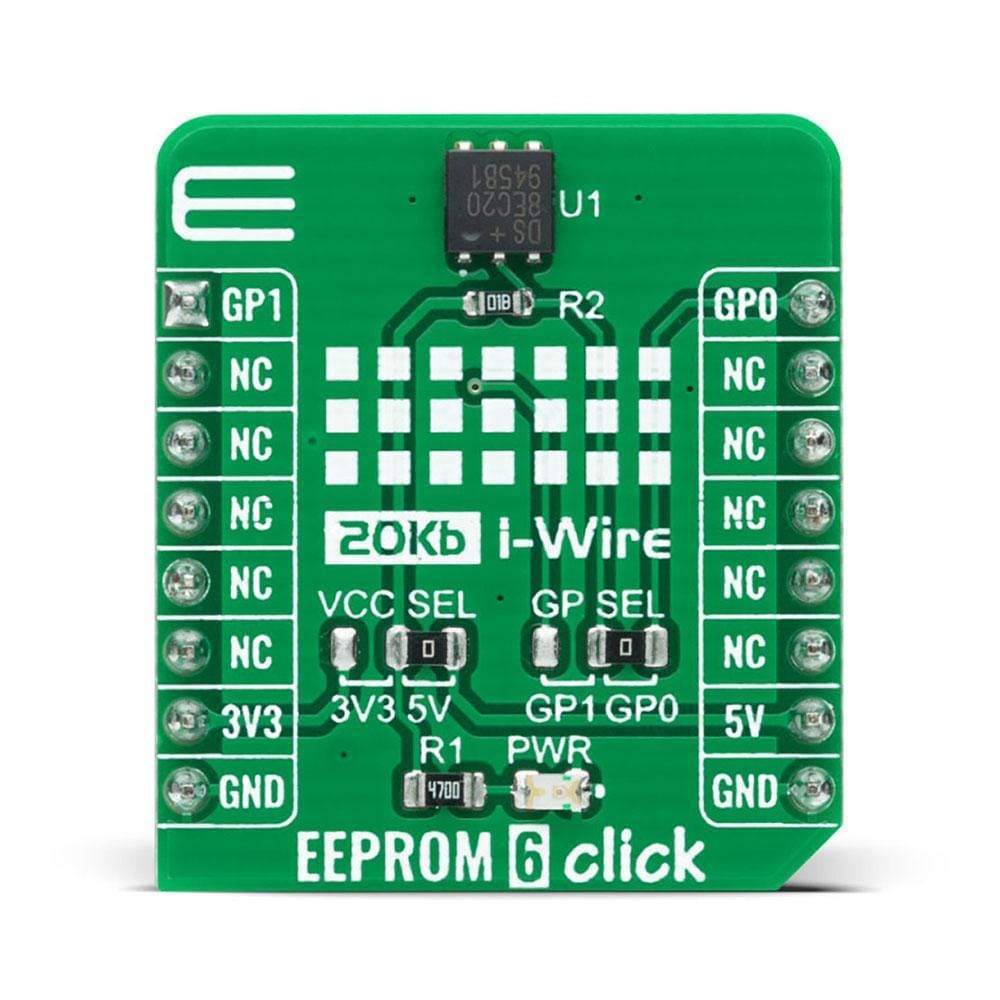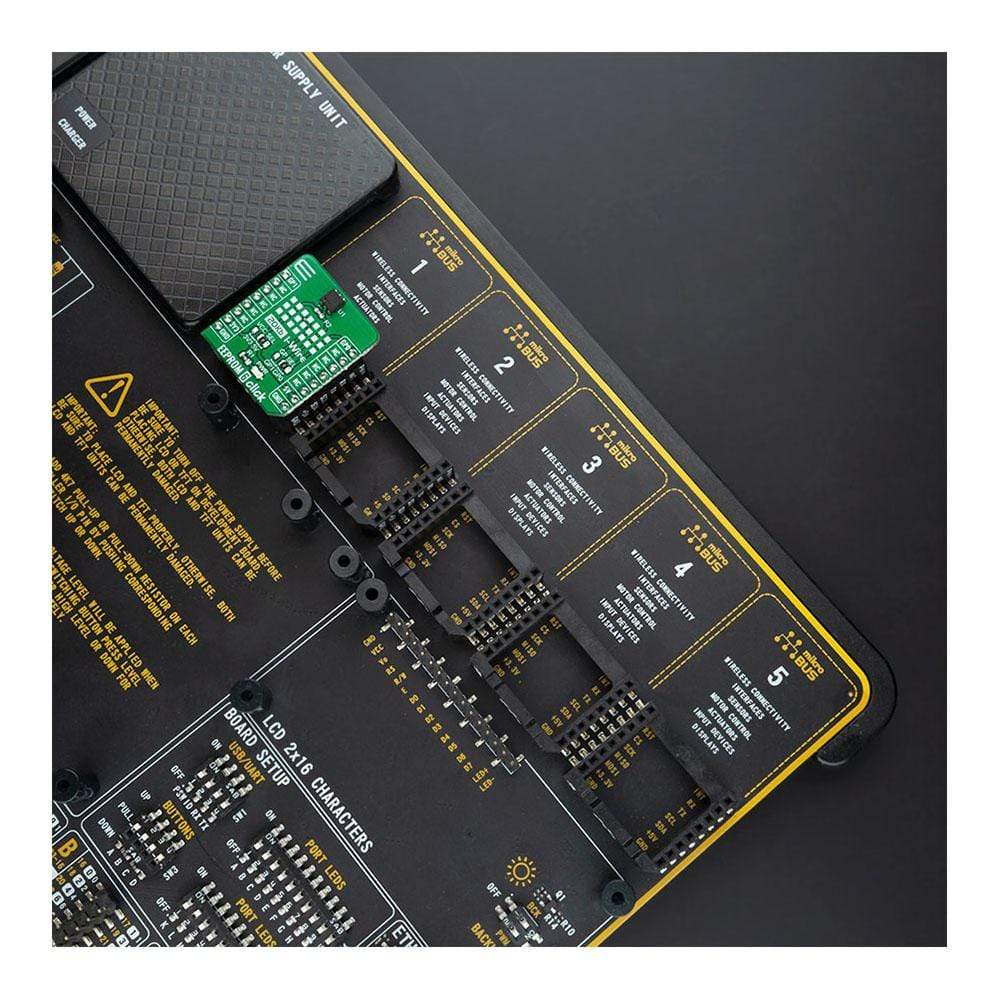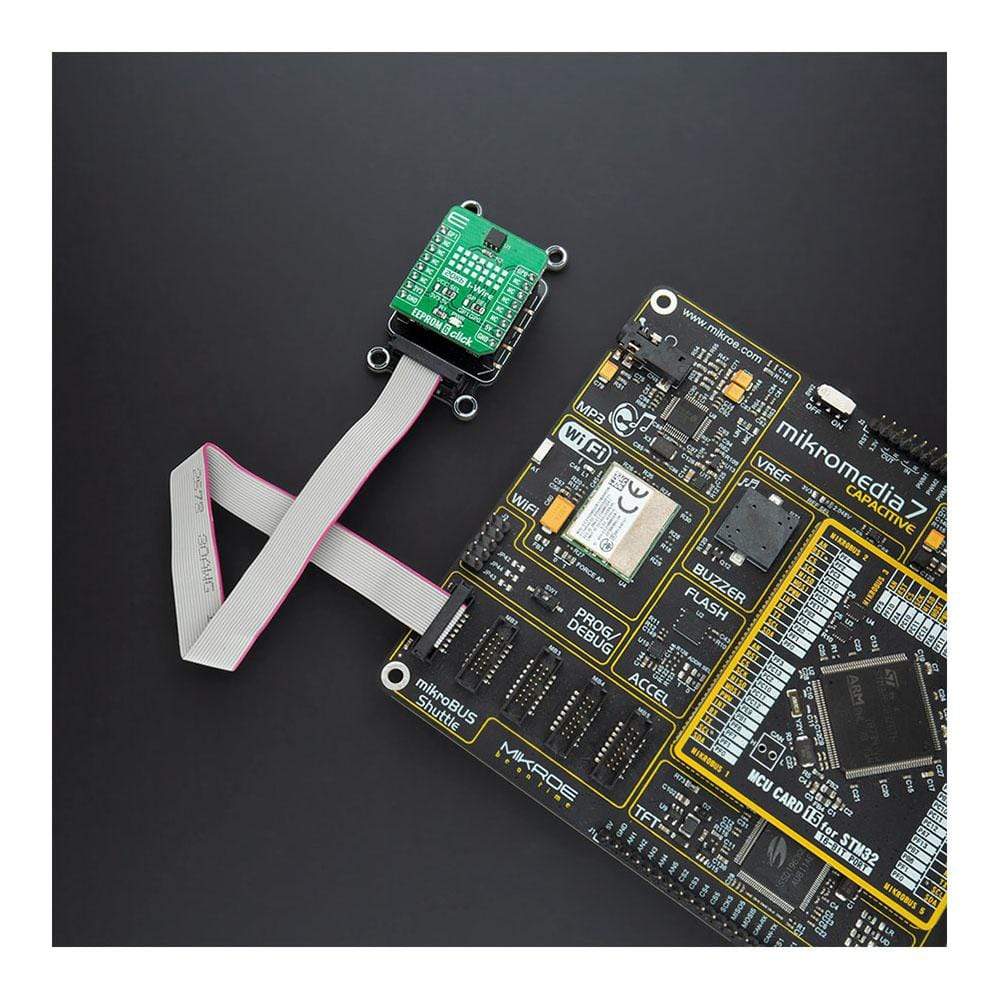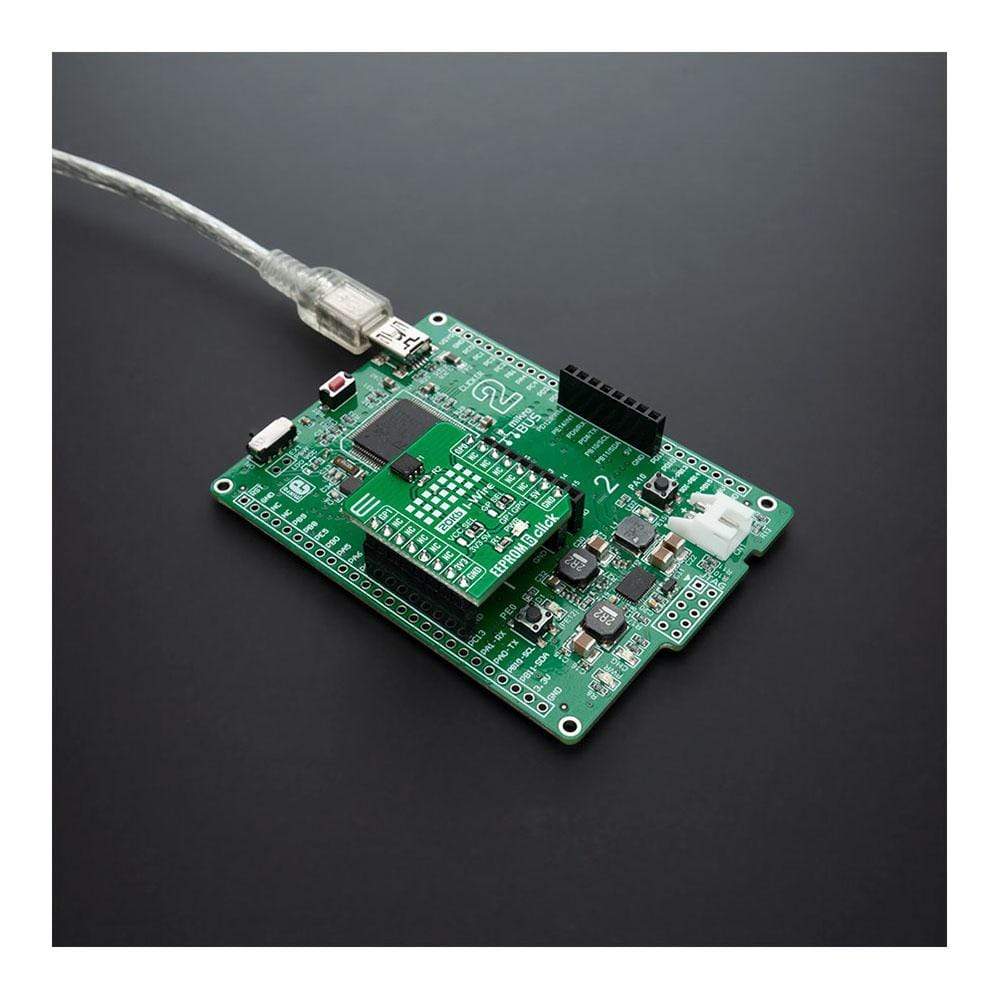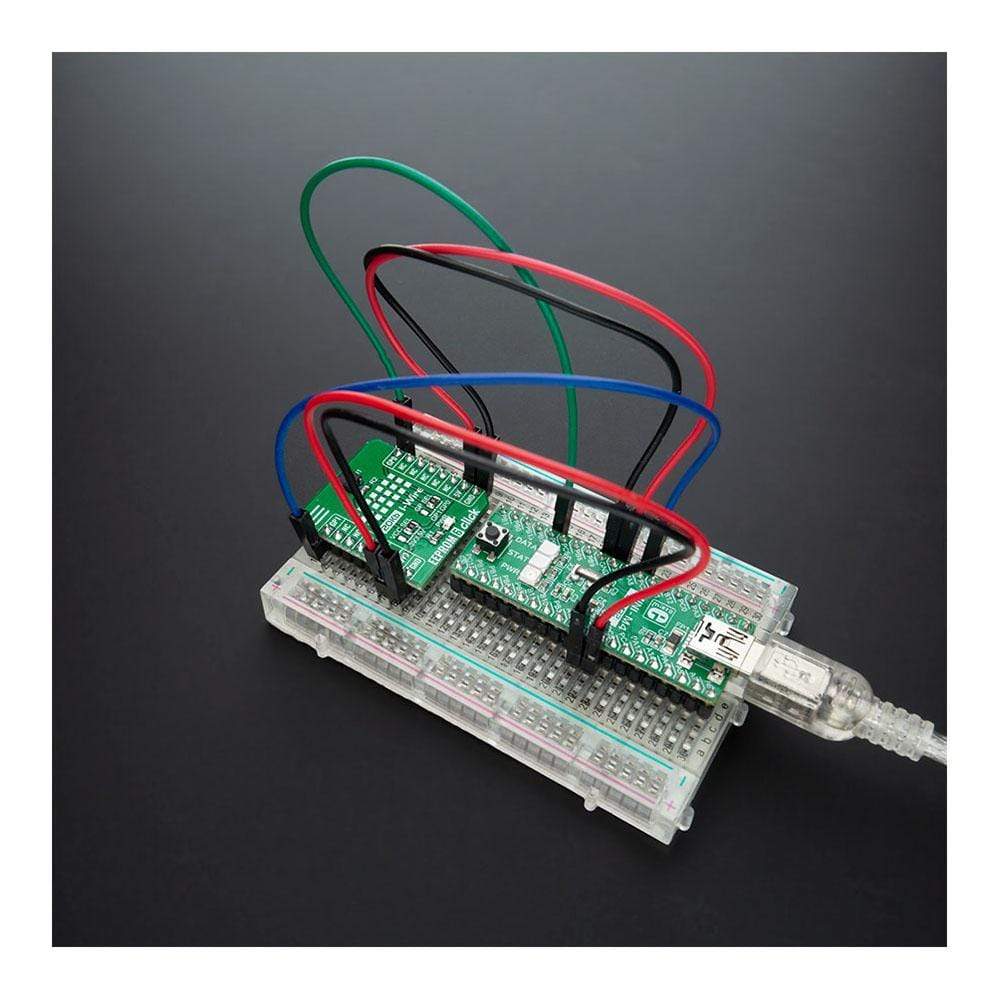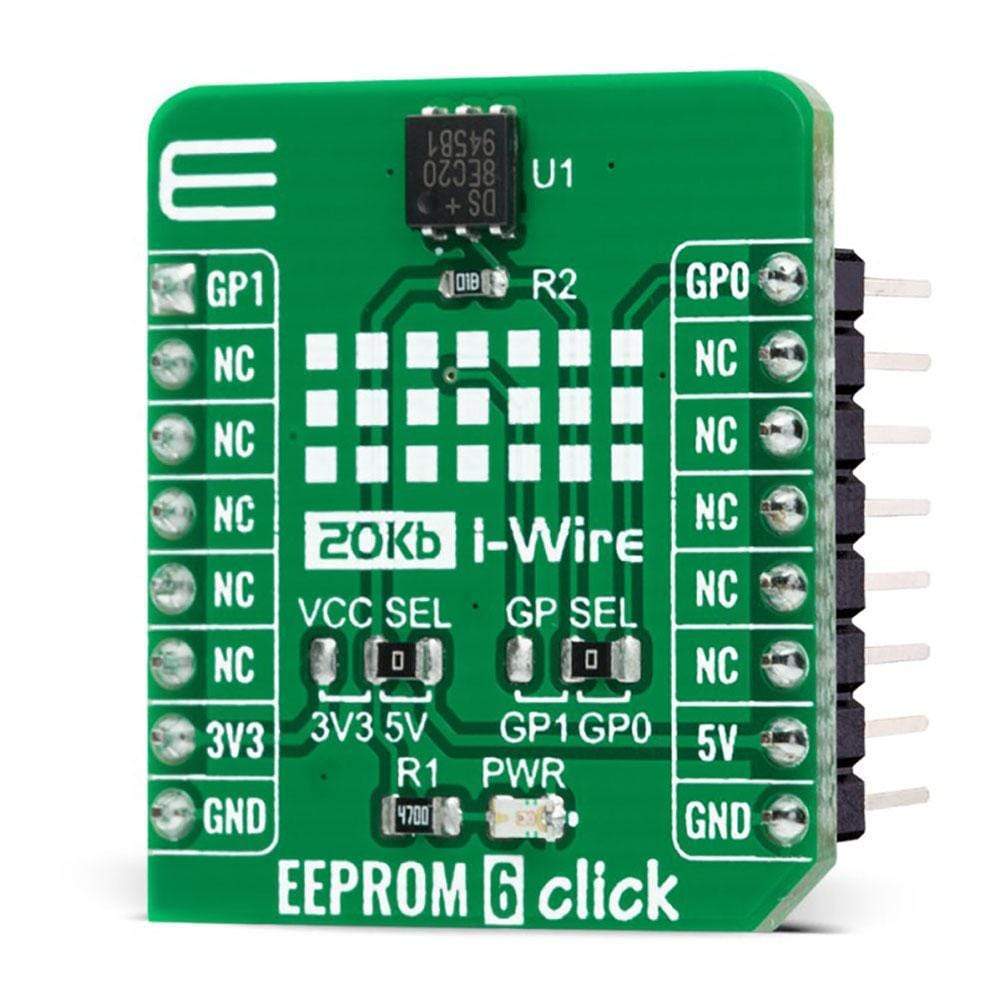
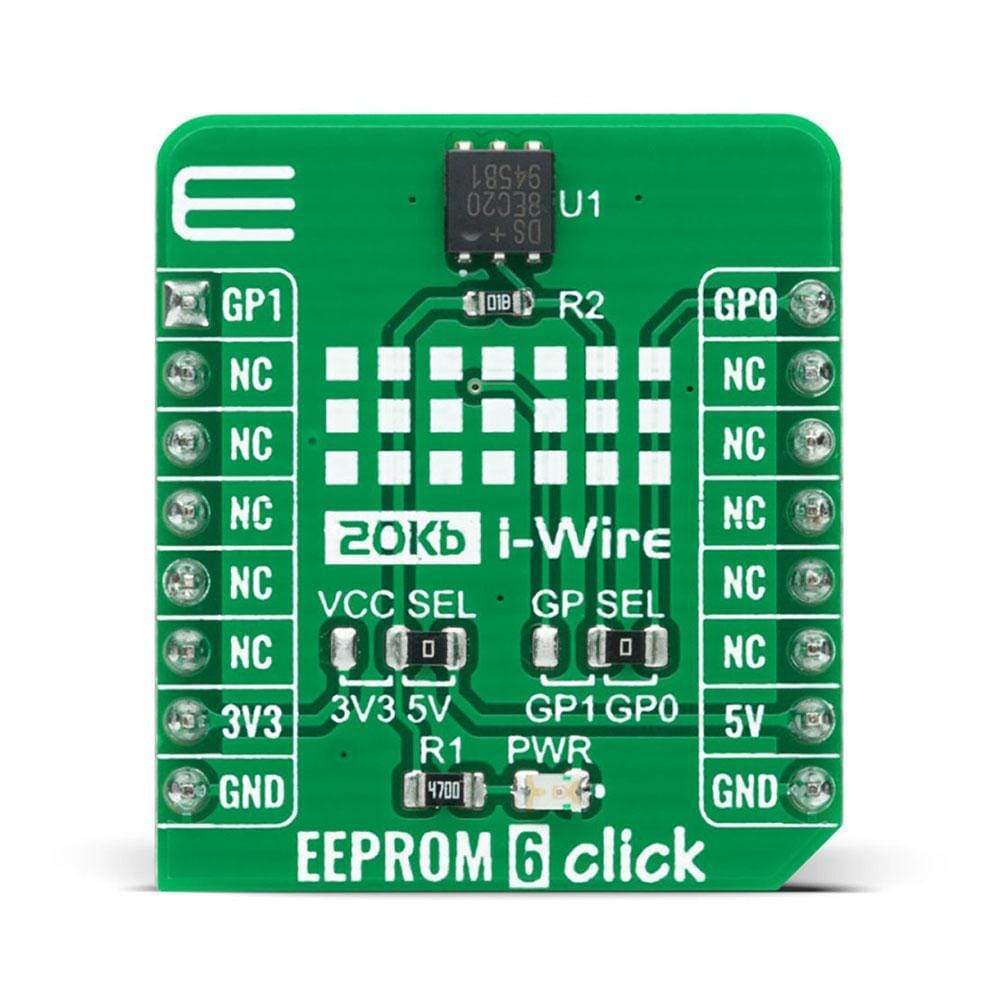
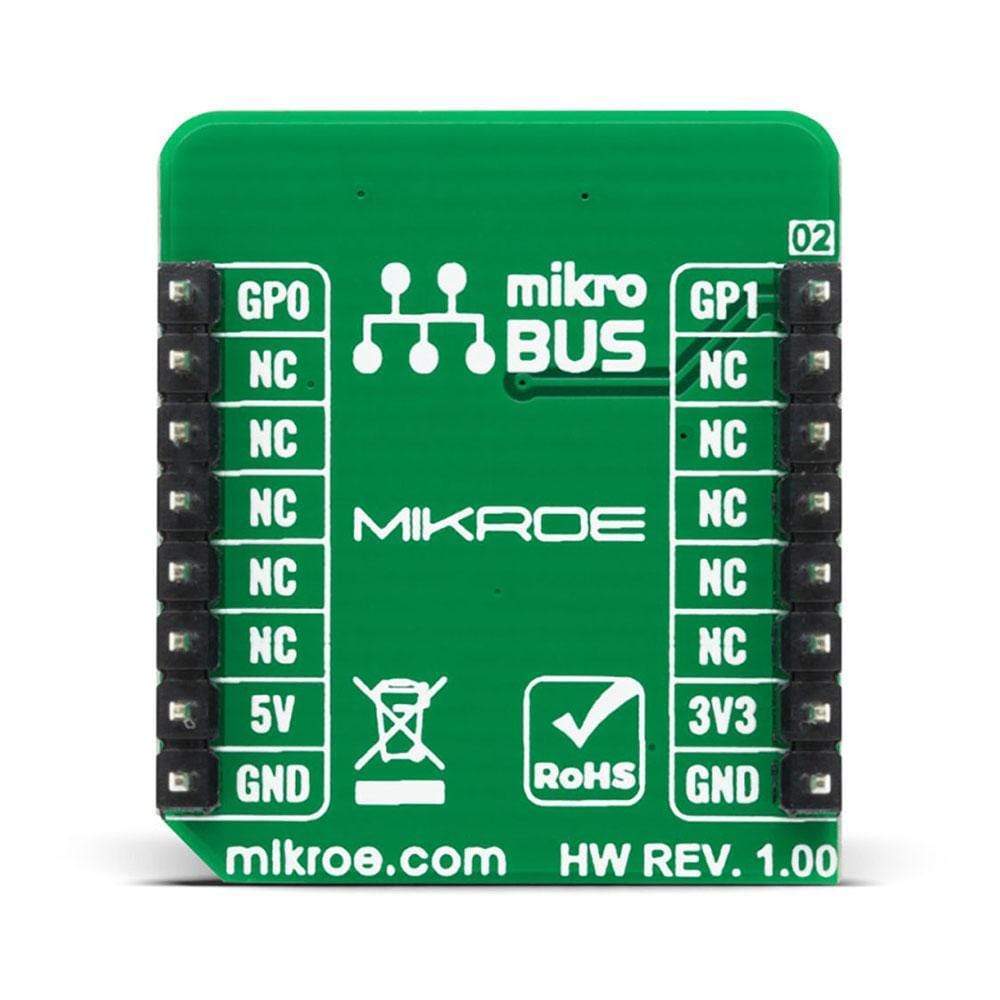
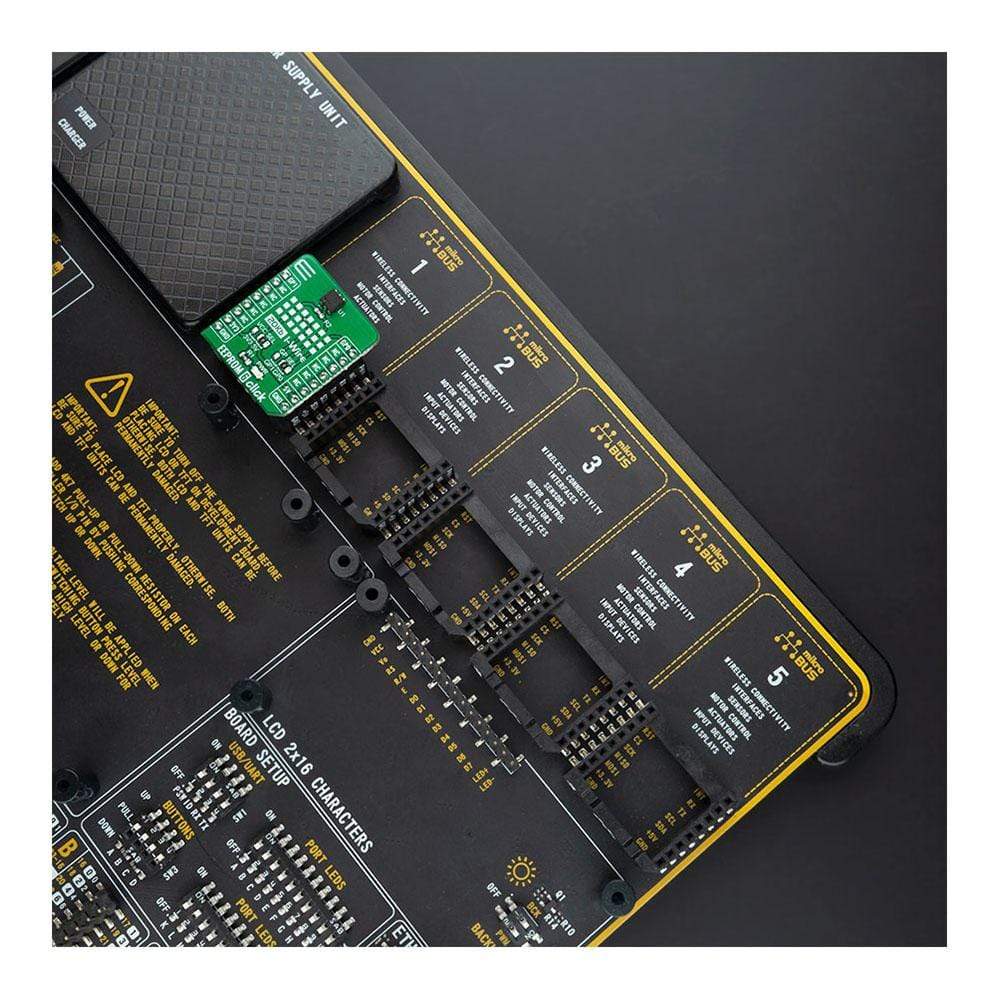
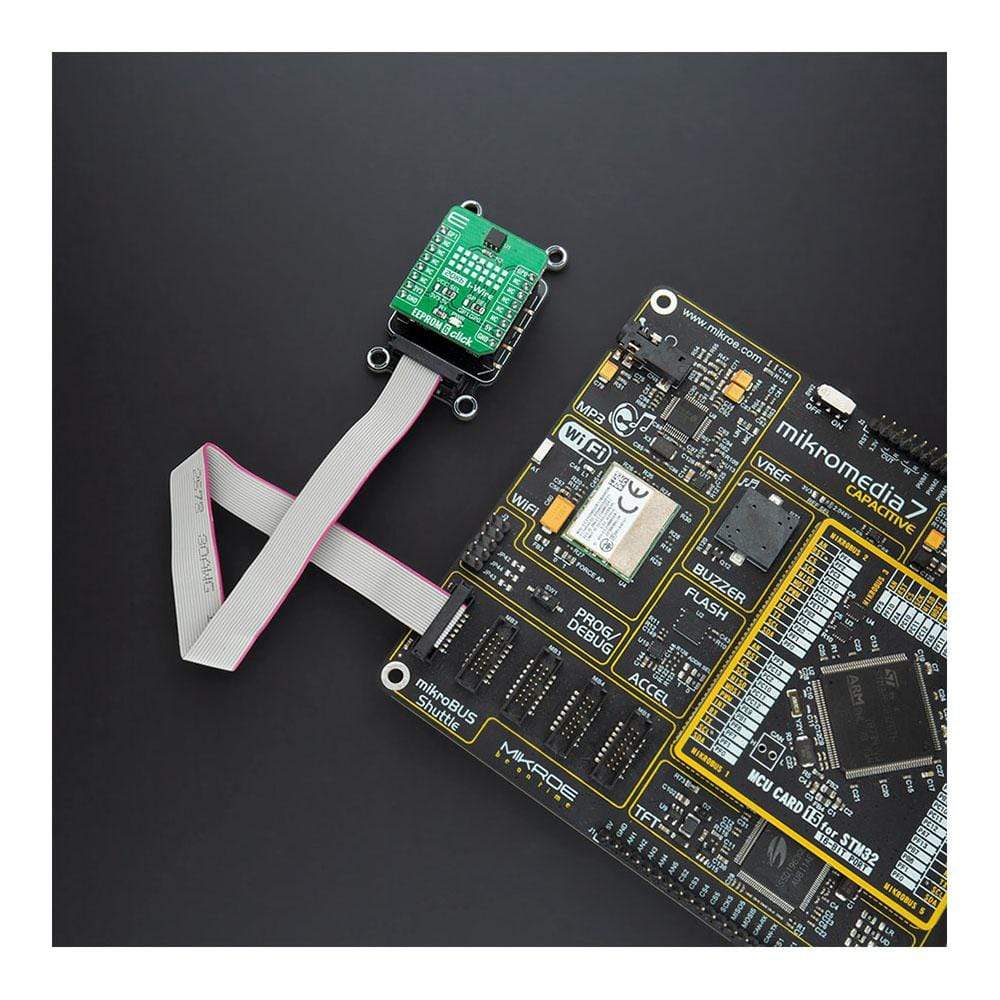
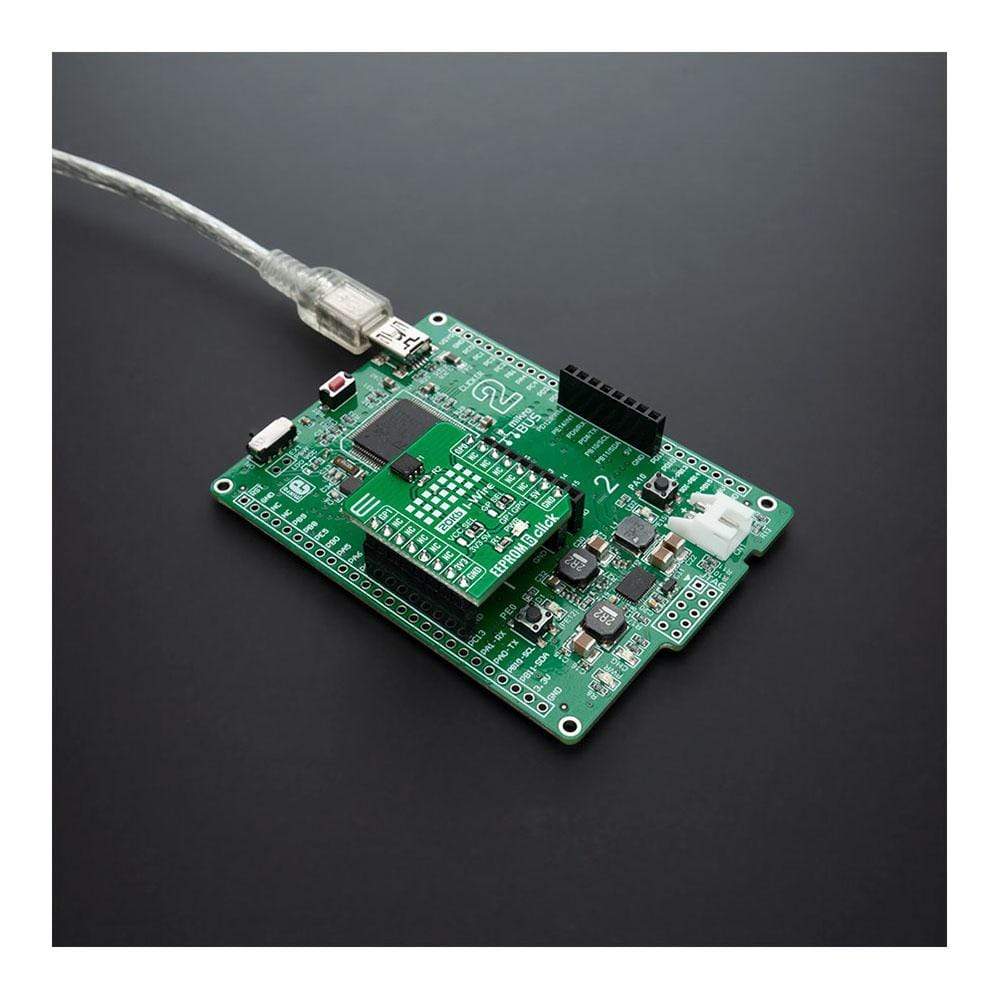
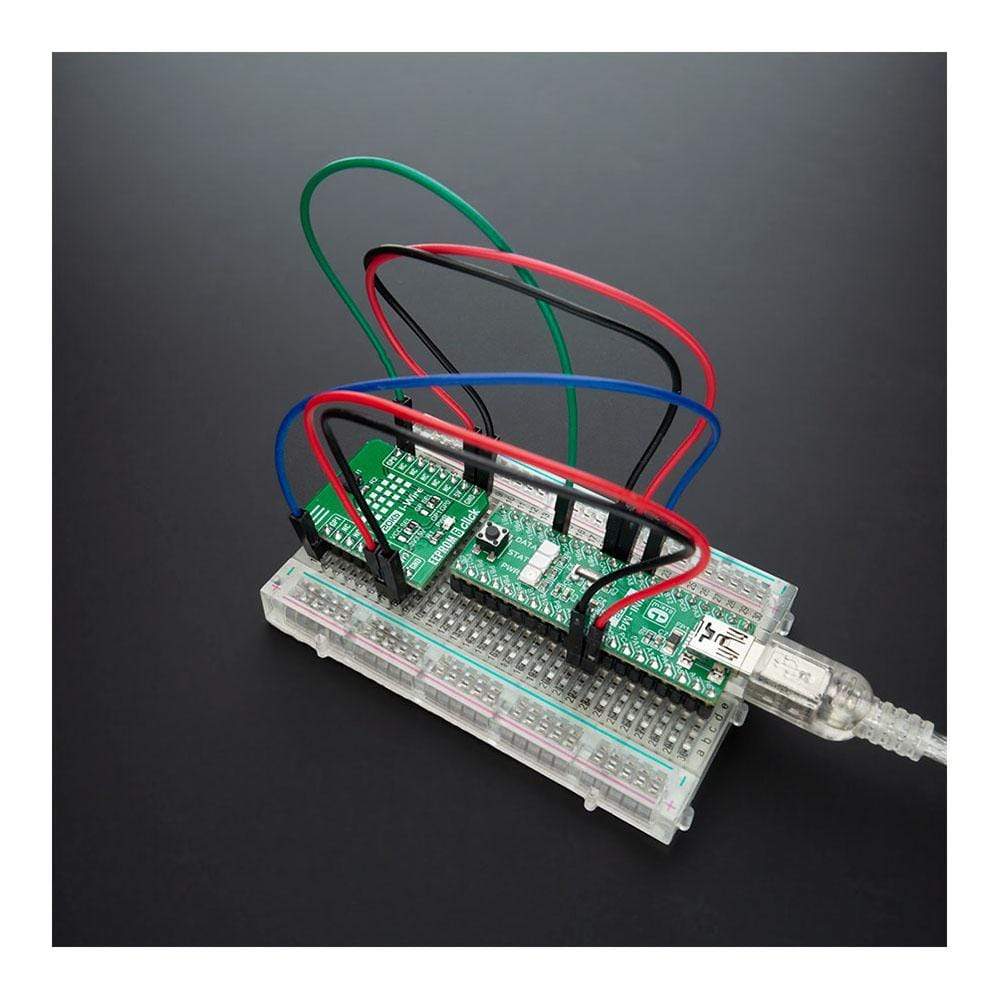
Overview
The EEPROM 6 Click Board™ is a compact add-on board that contains a serial EEPROM memory that operates from the 1-Wire interface. This board features the DS28EC20, a 20480-bit EEPROM organized as 80 memory pages of 256 bits each from Maxim Integrated. As a specific feature, blocks of eight memory pages can be write-protected or put in the “EPROM-Emulation” Mode, where bits can only be changed from a 1 to a 0 state. It communicates with MCU at 15.4kbps or 90kbps over the 1-Wire protocol and has a 64-bit registration number that ensures error-free device selection. This Click Board™ is suitable for applications like device authentication, data for self-configuration of central office switches, wireless base stations, or other modular-based rack systems.
The EEPROM 6 Click Board™ is supported by a mikroSDK compliant library, which includes functions that simplify software development. This Click Board™ comes as a fully tested product, ready to be used on a system equipped with the mikroBUS™ socket.
Downloads
Das EEPROM 6 Click Board™ ist eine kompakte Zusatzplatine, die einen seriellen EEPROM-Speicher enthält, der über die 1-Wire-Schnittstelle betrieben wird. Diese Platine verfügt über den DS28EC20, einen 20480-Bit-EEPROM, der als 80 Speicherseiten mit jeweils 256 Bit von Maxim Integrated organisiert ist. Als besondere Funktion können Blöcke mit acht Speicherseiten schreibgeschützt oder in den „EPROM-Emulation“-Modus versetzt werden, in dem Bits nur von einem 1- in einen 0-Zustand geändert werden können. Es kommuniziert mit MCU bei 15,4 kbit/s oder 90 kbit/s über das 1-Wire-Protokoll und verfügt über eine 64-Bit-Registrierungsnummer, die eine fehlerfreie Geräteauswahl gewährleistet. Dieses Click Board™ ist für Anwendungen wie Geräteauthentifizierung, Daten zur Selbstkonfiguration von Vermittlungsstellenschaltern, drahtlosen Basisstationen oder anderen modularen Rack-Systemen geeignet.
Das EEPROM 6 Click Board™ wird von einer mikroSDK-kompatiblen Bibliothek unterstützt, die Funktionen enthält, die die Softwareentwicklung vereinfachen. Dieses Click Board™ wird als vollständig getestetes Produkt geliefert und ist bereit für den Einsatz auf einem System, das mit der mikroBUS™-Buchse ausgestattet ist.
| General Information | |
|---|---|
Part Number (SKU) |
MIKROE-4296
|
Manufacturer |
|
| Physical and Mechanical | |
Weight |
0.018 kg
|
| Other | |
Country of Origin |
|
HS Code Customs Tariff code
|
|
EAN |
8606027380747
|
Warranty |
|
Frequently Asked Questions
Have a Question?
Be the first to ask a question about this.

